
Judith Blume is an American writer of children's, young adult, and adult fiction. Blume began writing in 1959 and has published more than 25 novels. Among her best-known works are Are You There God? It's Me, Margaret. (1970), Tales of a Fourth Grade Nothing (1972), Deenie (1973), and Blubber (1974). Blume's books have significantly contributed to children's and young adult literature. She was named one of the 100 most influential people in the world by Time magazine in 2023.
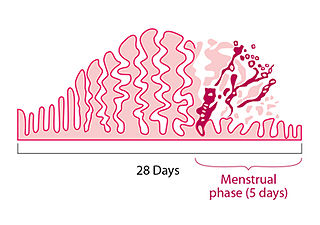
Menstruation is the regular discharge of blood and mucosal tissue from the inner lining of the uterus through the vagina. The menstrual cycle is characterized by the rise and fall of hormones. Menstruation is triggered by falling progesterone levels and is a sign that pregnancy has not occurred.
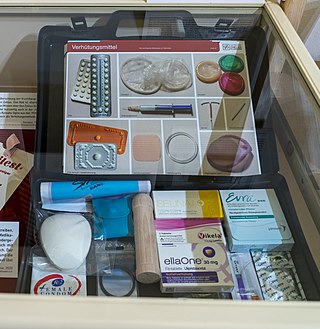
Sex education, also known as sexual education, sexualityeducation or sex ed, is the instruction of issues relating to human sexuality, including human sexual anatomy, sexual activity, sexual reproduction, safe sex and birth control, sexual health, reproductive health, emotional relations and responsibilities, age of consent, and reproductive rights. Sex education that includes all of these issues is known as comprehensive sex education, and is often opposed to abstinence-only sex education, which only focuses on sexual abstinence. Sex education may be provided as part of school programs, public health campaigns, or by parents or caregivers. In some countries it is known as "Relationships and Sexual Health Education".
Menarche is the first menstrual cycle, or first menstrual bleeding, in female humans. From both social and medical perspectives, it is often considered the central event of female puberty, as it signals the possibility of fertility.
Preadolescence is a stage of human development following middle childhood and preceding adolescence. It commonly ends with the beginning of puberty. Preadolescence is commonly defined as ages 9–12 ending with the major onset of puberty. It may also be defined as simply the 2-year period before the major onset of puberty. Preadolescence can bring its own challenges and anxieties.

Are You There God? It's Me, Margaret. is a middle-grade novel by American writer Judy Blume, published in 1970. Its protagonist, Margaret Simon, is a sixth-grader who grows up without a religious affiliation because of her parents' interfaith marriage. This contemporary realistic novel was popular with middle-grade readers in the 1970s for its relatable portrayal of a young girl confronting early-adolescent anxieties, such as menstruation, brassieres and boys. The recipient of national honors and book awards, the novel has been challenged for its frank discussion of sexual and religious topics.

Feminine hygiene products are personal care products used during menstruation, vaginal discharge, and other bodily functions related to the vulva and vagina. Products that are used during menstruation may also be called menstrual hygiene products, including menstrual pads, tampons, pantyliners, menstrual cups, menstrual sponges and period panties. Feminine hygiene products also include products meant to cleanse the vulva or vagina, such as douches, feminine wipes, and soap.

Our Bodies, Ourselves is a book about women's health and sexuality produced by the nonprofit organization Our Bodies Ourselves. First published in 1970, it contains information related to many aspects of women's health and sexuality, including: sexual health, sexual orientation, gender identity, birth control, abortion, pregnancy and childbirth, violence and abuse, and menopause. The most recent edition of the book was published in 2011. The book was revolutionary in that it encouraged women to celebrate their sexuality, including chapters on reproductive rights, lesbian sexuality, and sexual independence. Its emphasis on women's active engagement with their actual sexual desires stood in contrast to the societal notion of the role of "women as docile and passive," and "men as active and aggressive" in a sexual relationship.
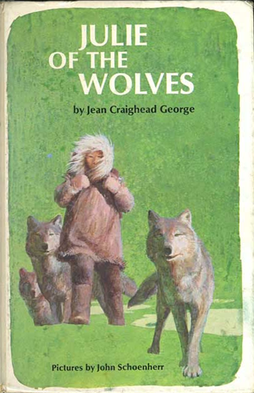
Julie of the Wolves is a children's novel by Jean Craighead George, published by Harper in 1972 with illustrations by John Schoenherr. Set on the Alaska North Slope, it features a young Inuk girl experiencing the changes forced upon her culture from outside. George wrote two sequels that were originally illustrated by Wendell Minor: Julie (1994), which starts 10 minutes after the first book ends, and Julie's Wolf Pack (1997), which is told from the viewpoint of the wolves.
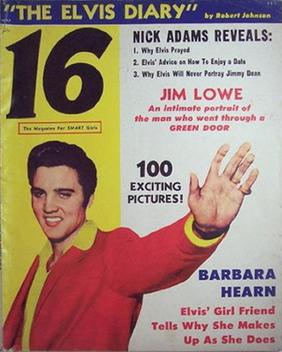
16 was a fan magazine published in New York City.

There are many cultural aspects surrounding how societies view menstruation. Different cultures view menstruation in different ways. The basis of many conduct norms and communication about menstruation in western industrial societies is the belief that menstruation should remain hidden. By contrast, in some hunter-gatherer societies, menstrual observances are viewed in a positive light, without any connotation of uncleanness.

Hanne Blank, also known as Hanne Blank Boyd, is an American historian, writer, and editor. Her written works include Virgin: The Untouched History, Straight: The Surprisingly Short History of Heterosexuality, and The Unapologetic Fat Girl's Guide to Exercise and Other Incendiary Acts.

A training bra is a lightweight brassiere designed for girls who have begun to develop breasts, at Tanner stage II and III. The training bra is intended to be worn during puberty when the breasts are not yet large enough to fit a standard-sized bra. Training bras often provide minimal or no support, and may serve aesthetic purposes to fulfill cultural norms and local beauty standards.

It's Perfectly Normal: Changing Bodies, Growing Up, Sex, and Sexual Health is a children's book written by Robie Harris and illustrated by Michael Emberley. The purpose of the book is to inform preadolescent children about puberty by exploring different definitions of sex. It was first published in 1994 by Candlewick Press and has since been updated several times with new information. It's also been published under the title Let's Talk About Sex in the UK. Harris was prompted to write It’s Perfectly Normal by her editor so young individuals would understand aspects of sexual health. The book has won multiple accolades and appraisal for its accurate information and its normalization of body changes and human sexuality. However, it has also been a source of controversy because of its graphic images that some consider inappropriate for the targeted age range. Many of Harris’s books, including It’s Perfectly Normal, have appeared on the American Library Association's Most Challenged Books list frequently since 2005. It’s Perfectly Normal has additional anniversary editions that were published in 2004, 2009, and 2014. The book has also been translated in 27 languages.
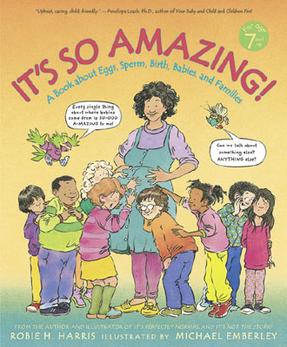
It's So Amazing! A Book about Eggs, Sperm, Birth, Babies, and Families is a 1999 children's book about pregnancy and childbirth. It is written by Robie Harris and illustrated by Michael Emberley.
Norma Meras Swenson is an activist, a medical sociologist and a leader in the developing woman's health movement. She co-authored Our Bodies, Ourselves (OBOS), co-founded the Boston Women's Health Book Collective, and served as president of the OBOS nonprofit organization for several years. Swenson was OBOS's first director of international programs, disseminating and translating the book into more than 30 languages. She continues to provide support to women's groups and maternal health clinics by assisting women-led organizations that work for social change in maternity care, in reproductive justice, and in healthcare-related human rights. OBOS has impacted women's health in Africa, Asia, Latin America, Europe, the United States and Canada. As a global community organizer, Swenson consults with national governments, private foundations and organizations, including the World Health Organization.

Menstrupedia comic is a guide to educate people around the world, particularly in India, on menstruation. It was started by Aditi Gupta and her now husband, Tuhin Paul. Menstrupedia aims to help people understand the process of puberty in women and men in order to destroy myths around menstruation and normalise the biological process.
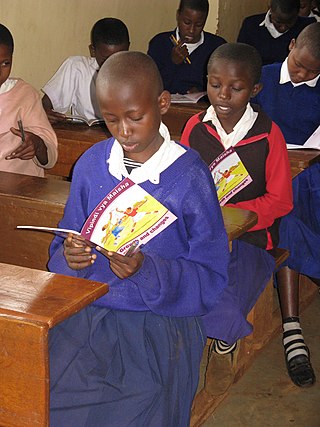
Menstrual hygiene management (MHM) or menstrual health and hygiene (MHH) refers to access to menstrual hygiene products to absorb or collect the flow of blood during menstruation, privacy to change the materials, and access to facilities to dispose of used menstrual management materials. It can also include the "broader systemic factors that link menstruation with health, well-being, gender equality, education, equity, empowerment, and rights". Menstrual hygiene management can be particularly challenging for girls and women in developing countries, where clean water and toilet facilities are often inadequate. Menstrual waste is largely ignored in schools in developing countries, despite it being a significant problem. Menstruation can be a barrier to education for many girls, as a lack of effective sanitary products restricts girls' involvement in educational and social activities.

Irreversible Damage: The Transgender Craze Seducing Our Daughters is a 2020 book by Abigail Shrier, published by Regnery Publishing, which endorses the controversial concept of rapid-onset gender dysphoria (ROGD). ROGD is not recognized as a medical diagnosis by any major professional institution and is not backed by credible scientific evidence.

Deal With It! A Whole New Approach to Your Body, Brain, and Life as a gURL is a 1999 teen advice and sex education book written by Esther Drill, Heather McDonald, and Rebecca Odes, the creators of the American website Gurl.com. Using the same format of the original website, the book was published by Pocket Books and released on September 1, 1999.

















